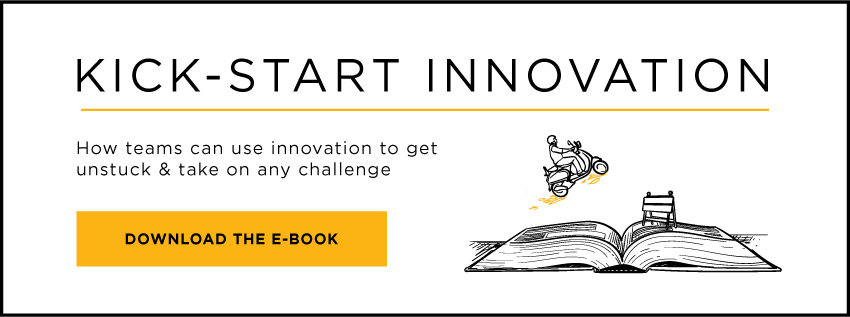One of the biggest complaints business leaders hear from teams is that they don’t have the time or budget to spend doing design thinking activities. These employees assume that even if it might be useful, all of the effort put into brainstorming, observing customers, iterating ideas and gathering feedback will take too much time and money to be worth it.
IBM and Forrester have proven that the opposite is actually true. The two firms recently conducted in an in-depth study of the economic impact of design thinking. The study found that when project teams use design thinking strategies, they were able to double their design and execution speed and reduce development and testing time, which resulted in increased profits of $182K-to-$1.1M per project.
So how does investing so much front-end effort into brainstorming and feedback loops actually cut the time and cost of a project in the end? It prevents teams from making mistakes that waste huge time and money and result in less appealing products.
The Sooner You Fail The Better
At the outset of a project, taking time to observe what customers actually need helps teams make the right decisions during planning, when it costs a lot less time and money to pivot from a mistake.
Imagine for example, an app development team could show customers their entire user interface design on sticky notes, which they sketched in a brief brainstorming session. They are certain the design is brilliant, but customers find it confusing, or discover missing information that requires the entire interface to be reworked. Fixing those sticky notes will literally take minutes. But if that same team decided they didn’t have time to waste doing customer interviews and running feedback loops, that discovery down the line will set them back by weeks.
These kinds of examples can be found in any project, because when we design things in isolation we often fail to recognize the problems that the average customer will encounter. The longer it takes to identify those problems and fix them the more time and cost it adds to the project.
The IBM and Forrester report assessed the cost of such errors at every stage of a project, and found that, on average, changes in the design phase require hours to days to complete; changes during the building and testing phase can add weeks to months; and changes identified post-release are often never fixed.
When Creativity Turns to Regret
The IBM and Forrester report found other desirable cultural benefits that emerged when project teams embraced design thinking — which translate into additional business results. For example, when project teams identify the need for fixes during the design phase, it actually inspires them to be creative. But when those same fixes emerge during testing or post-release, it results in frustration, pessimism, and loss of faith in their leaders.
The study also found that when teams leverage design thinking strategies throughout a project, they are more invested in the collaboration process, which drives better customer experience and greater sales, and results in a more empowered, engaged, and happy workforce.
The results of this report demonstrate that when you make delivering value to your users or customers the most important goal of a project — time, cost, quality and revenue benefits will follow.
Learn how to enable innovation skill-building at scale or download our free ebook Kickstart Innovation: A Guide for Organizations.
